Commentary Open Access
An Overview on Wounds Their Issues and Natural Remedies for Wound Healing
| Mohammad Amir Qureshi1, Fehmeeda Khatoon1* and Shakeel Ahmed2 | |
| 1Department of Applied Sciences and Humanities, Faculty of Engineering and Technology, Jamia Millia Islamia, New Delhi, India | |
| 2Department of Chemistry, Faculty of Natural Science, Jamia Millia Islamia, New Delhi-110025, India | |
| Corresponding Author : | Fehmeeda Khatoon Department of Applied Sciences & Humanities New Delhi, 110025, India Tel: +91-9868603961 E-mail: fehmeeda59@gmail.com |
| Received: May 05, 2015; Accepted: June 02, 2015; Published: June 09, 2015 | |
| Citation: Qureshi MA, Khatoon F, Ahmed S (2015) An Overview on Wounds Their Issues and Natural Remedies for Wound Healing. Biochem Physiol 4:165. doi:10.4172/2168-9652.1000165 | |
| Copyright: © 2015 Qureshi MA, et al. This is an open-access article distributed under the terms of the Creative Commons Attribution License, which permits unrestricted use, distribution, and reproduction in any medium, provided the original author and source are credited. | |
| Related article at Pubmed, Scholar Google | |
Visit for more related articles at Biochemistry & Physiology: Open Access
Abstract
In the present review, new and necessary information about wounds, their healing stages and concerned issues; hydrogel wound dressing and their cross linking systems which affect the wound healing are discussed. However, concerns associated with the overuse of synthetic drugs and the consequent emergence of bacterial resistance is being raised. So, there is need of some alternatives to inhibit growth of bacteria on wounds. Since ancient time, plants are already proved to be a natural remedy for various ailments. J. regia and S. alba are two potent plants having antimicrobial properties and the literature has indicated that clinical properties of J. regia and S. alba and their use will help in healing of wounds in a natural and cost effective way.
| Keywords |
| Wound healing; Natural remedial system; Juglans regia; Salix alba |
| Abbreviations |
| CS- Chitosan; PVP- Poly Vinyl Pyrolidone, pNIPAm- Poly (N-isopropyl acrylamide); CA- Citric Acid; LCSTLower Critical Solution Temperature |
| Introduction |
| Each year millions of people around the world experience both acute and chronic skin injuries and annually around 37 million of people suffer from chronic wounds [1]. Synthetic compounds caused a lot of environmental pollution because they take long time to return in the nature. India has ranked 10th to the world in death caused by road accidents. This not only affects the individual patient life quality but also affects the economy of the country. Synthetic materials are more complex in comparison to natural substances, so in recent years an increasing tendency towards the use of natural substances has been observed. |
| Over the past fifty years, wound therapy has moved from dry out the wound bed to maintain a balanced moist environment [2]. Traditional dressings which had their main function as absorbing wound exudate, and led to formation of crust on the wound surface with remarkable scarring have been widely replaced by modern dressings aiming to improve healing by handling wound fluid in a way that prevents accumulation of excess exudate while maintaining a certain degree of moisture, and thereby enhancing the chance of obtaining new skin tissue without scarring [3]. Although several types of wound dressings are available, including products which contain active pharmaceutical ingredients but no single dressing have all the desired properties. The performance of the chosen dressing will be affected by several factors such as the presence of underlying diseases, nutrition state, amounts of wound exudate and the micro flora of the wound [4]. During the process of optimization of an antimicrobial wound dressing it is necessary to establish the storage stability of the product as loss of original properties due to instability may lead to decreased or lost performance. Injured skin is susceptible to infection due to the breakage of cutaneous barrier which protects the underlying tissue against bacterial and fungal invasion. The outcome of an infection depends on the degree of pathogenicity of the invading organisms and the ability of the host to defend itself [5]. Wound infections are mainly caused by microorganisms such as S. aureus. P. aeruginosa, E. coli, and streptococci either in their free-floating state or in biofilms where they are attached to a surface and protected by surrounding extracellular matrix produced by them. Wound dressings containing plant extract with antimicrobial compounds can be applied in order to control wound infections. As wound infections can be caused by both planktonic bacteria, biofilms and fungus therefore it is essential to determine whether the plant extract loaded wound dressing has an effect on these species or not. Wound care system can be traced back to early civilization and most treatments were based phytomedicines [6]. Plants and their products have immense potential for the treatment of wound. Many plants have a very important role in the process of wound healing. Plants are more potent healers because they promote the repair mechanisms in the natural way. Today, in developing countries, up to 80% of the population depends upon medicinal plants for their primary health care [7], it not only increase the rate of healing but also maintains the aesthetic conditions, play a significant role in wound care management [8-9] and it has been estimated that nearly one-third of all herbal medicines are used for the treatment of wounds [10]. However, there is an increment in use of herbal remedies in developed countries to treat a wide variety of ailments over the past two decades [11]. This popularity affords a timely opportunity to investigate the potential of herbal medicines as a cost effective treatment of wound healing. |
| Wound healing process and issues with wound and wound care system |
| Wound is a type of injury happened quickly when skin is cut, open, or where blunt force trauma causes a contusion. In pathology, it specifically refers to a sharp injury which damages the dermis of the skin. Micro-organisms, i.e., bacteria or fungi are found on wounds. They rapidly infect the skin to seriously impeding wound healing process. Bacterial biofilms delayed wound healing of chronic wounds by competing nutrients and oxygen of the body [12]. Increased in wound size, wound hypoxia, and vessels occlusion delayed the wound healing [13]. A bacterial population size of 105 colony forming units (cfu)/g or cm2 indicates an infected wound and 104cfu/g or cm2 in complex wounds [14]. On the basis of condition wound could be divide in to two types: one is chronic wounds and other is burn wound and sepsis [15,16]. Wound healing is specific biological process related to the general phenomenon of growth and tissue regeneration. The entire process of wound healing is ordered cascade of events, which can be divided into four distant but over lapping phase of homeostasis, inflammation, proliferation and maturation [17-21]. (Figure 1) showed skin re-epithelialization during wound healing process. |
| Maceration |
| When moisture is trapped into the skin for a prolonged period, then skin will turn white or grey and will soften and wrinkle which is purely moisture dependent process occurred as a result of over-hydration [22- 24]. Macerated skin is more permeable to microorganisms than intact skin. Due to inability of wound dressing to absorb moisture of the wound may lead to increase in area of wound infection. |
| Wound exudate |
| Wound exudate may occur with the use of wound dressings that are unable to absorb high level of exudate or dressings that are not changed on the regular basis. Presence of proteases in wound exudate is one of the most common causes of problems in the wound skin [25]. The enzymatic activity of proteases can damage healthy epidermis, if wound fluid is left in contact with surrounding skin [26-28]. |
| Skin stripping |
| This is caused by the repeated removal of adhesive tapes and dressings from the skin. This process inflicts levels of damage to the layers of the stratum corneum, and may cause inflammatory skin damage [29]. |
| Bacterial and Fungal infections |
| Alkaline wound fluid will promote the growth of both bacteria and fungus as it has pH from 5.5-9 [30]. A number of local factors such as damaged skin either excessively moist or dry, and changes in the temperature and normal acid balance of the skin increase a person’s susceptibility to fungal infections. Most wounds are typically contaminated by bacteria which are normally harmless if the skin is intact. However, the protective barrier of skin is disrupted these normal floras are able to colonize the injured area. The most common bacteria causing wound infection is Staphylococcus aureus [31]. |
| Antibiotic resistance to the pathogens |
| Antimicrobial resistance has become a problem because of the overuse of antibiotics. Greater the overuse of antibiotics in the community, greater will be the resistance problem [32,33]. Generally topical antibiotics create a development of antibiotic resistance because of inadequate penetration for deep skin infections. A recent study has shown that biofilm formation by certain bacteria has become an important virulence factor associated with the generation of secondary resistance [34] because antimicrobials are not able to penetrate into the biofilm to completely eliminate the organisms. Another important mechanism of resistance is the transfer of genetic material from organism to organism [35]. Excessive use of antibiotics also relates to the cytotoxicity of the surrounding environment of the wound which in result delayed wound healing. |
| Nutritional deficiency |
| Protein and glucose are required for all phases of wound healing, particularly important for collagen synthesis. Iron is required to transport oxygen. Minerals, like zinc and copper are important for enzyme systems and immune systems. Vitamins A, B complex, and C are responsible for supporting epithelialization and collagen formation. Carbohydrates and fats provide the energy required for cell function [36]. |
| Oxygen deficiency |
| Hypoxia is the important risk factor that interferes with wound healing. Hypoxia adversely affects the functions of neutrophil, macrophage, and fibroblast in repair phase. Both, oxygen-dependent and oxygen independent systems are required in order to kill microorganisms. Oxygen radicals derived from molecular oxygen are important in bacterial killing by oxidizing cell membranes. Collagen synthesis from fibroblasts also requires oxygen. If the tissue is hypoxic, procollagen hydroxylation suffers and mature collagen cannot be formed. Porous dressings usually used as wound dressing to absorb wound fluid and promote healing [37]. |
| Pain at dressing change |
| A sealed wound which has good apposition from pathogenic invasion by epithelialisation for 48-72 hours [38]. However, the new cells are still delicate and need protection. Hence dressings applied on the wound are commonly allowed to remain intact until the second or third day. However, gauze materials are prone to adhere and can cause pain and trauma when they removed [39]. The inappropriate selection of dressing materials for wound healing by secondary intention can results in significant pain and distress at dressing change [40]. Hydrocolloids are less painful when removed because they adhere to the wound bed far less than gauze dressings [41]. |
| Wound Dressings |
| Different wound dressings are used to avoid all above shortcomings which occurred during wound healing process. Dressings can be classified as primary dressings which are in physical contact with the wound surface, secondary dressings that cover the primary dressing, and island dressings made up of an absorbent region in the middle and a surrounding adhesive part. In general, dressings are divided into two; traditional and modern dressings. Cotton wool, natural or synthetic bandages and gauzes are referred to as traditional dressings, while modern dressings include hydrocolloids, alginates, hydrogels, semi permeable adhesive film, foams, biological dressings and tissue engineered skin substitutes. Further categorization can be based on the functionality of the dressing i.e. occlusive, absorbent etc., the type of material like hydrogel, collagen etc., and the physical form of the product e.g. gel, ointment etc. as shown in Figure 2. |
| Polymers and cross linked polymers in wound care |
| To prepare wound dressings system different polymers were used as found in literature. These polymers may be natural and synthetic. At the time of wound dressing preparation of one polymer interact with other polymer by different ways that may be hydrophilic, hydrophobic, covalent, and hydrogen bonding, etc. |
| Chitosan (CS), a natural polymer has been used as a structural material in hydrogel films preparation. CS is a linear polysaccharide composed of β-(1-4)-linked D-glucosamine and N-acetyl-Dglucosamine units (Figure 3). Commercially, it is produced by the deacetylation of chitin (>60%), a structural element in the exoskeleton of crustaceans and insects. CS is the second most abundant natural biopolymer after cellulose [42]. It has been extensively used in large number of applications mainly due to low toxicity, biocompatibility, and susceptibility to enzymatic degradation. It does shares the benefits of lysozomal degradation but does not induce an immune response. CS does not suffer disadvantages like other naturally derived materials, such as immunogenicity etc. Due to the presence of nitrogen in its molecular structure, this polymer is distinct from other commonly available polysaccharides. The primary aliphatic amines of CS can be protonated under acidic conditions (pKa is 6.3) [43]. Cationic nature of CS polymer allows it to become water soluble. CS has extensive application in the biomedical and biotechnological fields [44-46]. CS has been used as wound dressing and as a scaffold in orthopaedics since it allows normal cellular components of skin to regenerate and prevent scar formation [47,48]. |
| Polyvinyl alcohol (PVA) is a non-toxic, water soluble synthetic polymer and has good physical, chemical and film forming property [49]. The use of this polymer is important in many applications such as controlled drug delivery systems, membrane preparation, and food packaging. Anti-thrombogenicity, cell compatibility, blood compatibility and biocompatibility of PVA have been studied extensively [50-52]. |
| Polyvinyl pyrolidone (PVP) is a synthetic linear non-toxic, biocompatible polymer, frequently used in food and pharmaceutical industries [53,54]. PVP hydrogel has excellent transparency and biocompatibility. It is easily soluble in water and in many organic solvents. Its use as a biomaterial in artificial blood plasma was prevalent in World War II [55-57]. Nevertheless, over the last five decades, PVP has found other applications of greater scientific-biotechnological interest, such as hydrogels for controlled drug release, [58] tissue regeneration and implants [59], wound dressings [60]. |
| Smart hydrogels which change their various properties on changing of environmental stimuli (pH, temperature, and ionic strength) have found wide application in biomedical areas [61,62]. Among these system, pH and temperature responsive hydrogels have been most extensively studied because these two factors are crucial to human body and can be easily controlled both in vitro and in vivo environment [63,64]. Among those polymers that can respond to external stimuli, Poly (N-isopropyl acrylamide) (PNIPAm) has been widely examined as a smart material due to its unique phase separation behavior upon external temperature changes near lower critical solution temperature (LCST) at 32°C. PNIPAm is relatively hydrophilic at room temperature. PNIPAm becomes relatively hydrophobic when heated above LCST [65]. |
| Citric acid (CA) is the main organic acid with one hydroxyl and three carboxyl groups exists widely in citrus fruits and pineapples. CA was chosen as the additive for the following reasons. First of all, as a result of its multi-carboxylic group’s structure, esterification could take place between the carboxyl groups in CA and the hydroxyl groups of other polymers. Such esterification would improve the water uptake [66]. CA may serve as a cross-linking agent because of multi-carboxylic structure. Residual free CA in the polymeric solution may act as a plasticizer. CA is rated as nutritionally harmless since it is a nontoxic metabolic product of the body (Krebs or citric acid cycle). Consequently, it has already been approved by FDA for use in humans [67]. |
| Polymeric network must satisfy two conditions in order to satisfy the requisite features of a hydrogel films: (1) semi-permanent strong inter-chain interactions and (2) the network should promote the access and residence of water inside the polymeric network. Hydrogel films that meet these demands may be prepared by electrostatic, hydrophobic, and hydrogen bonding among the polymer chains [68,69]. (Figure 4) showed the schematics of three major physical interactions (i.e. ionic, polyelectrolyte, and hydrophobic associations) because the network formation by all of these interactions was purely physical. |
| From (Figure 5) transient gel or liquid states based on temperature take advantage of hydrophobic interactions between chains that yield a semi-rigid gel from a moveable liquid solution. Specifically, when system temperatures pass a LCST, the material undergoes a hydrophilic to hydrophobic transition. These materials can be injected into the body as a liquid, forming a gel in situ when the body temperature is above LCST, offering the potential to serve as carrier for a wide range of biomedical applications [70,71]. Hydrogels prepared by aggregation of CS-based co-polymers show promising thermo-reversible gelation properties in aqueous media [72-75]. Bhattarai et al. developed inject able, thermo-reversible gel that utilized CS chain interactions for gelation [76]. It is believed that at low temperature the hydrogen bonding dominate in polymeric chains, while at high temperatures the hydrophobic interactions prevail [77,78]. This type of thermo-sensitive gelation has also been observed in other cellulose derivatives grafted with hydrophilic moieties [79]. |
| While physically bonded hydrogels have the advantage of gel formation without the use of cross linker but they also have limitations. It is also difficult to precisely control the pore size, chemical functionalization, and dissolution. Alternatively, robust hydrogels produced using irreversible networks. Polymeric chains of these hydrogels are covalently bonded together either by using small molecules cross linker or irradiation chemistry. Figure 6 shows several cross linkers that have been used to make cross linked hydrogels. Most of these cross linker react with the polymer and form irreversible inter or intra-molecular bridges among the polymer chains. The properties of cross linked hydrogels depend mainly on their cross linking density and the ratio of moles of cross linker to the moles of polymer repeating units [80]. Many bi-functional small molecules have been used to crosslink polymers, including glutaraldehyde, formaldehyde, and others shown in (Figure 6) [81]. In general, these cross linkers improved the mechanical properties of physically associated hydrogel films and offer desirable properties. Cross-linked networks can be prepared using the available –NH2 and –OH groups. The following sections in (Figure 7) describe the different ways of making irreversible and reversible hydrogels. |
| In order to eliminate the use of cross-linker, researchers have pre-functionalized polymer chains with reactive functional groups. Depending on the speed of cross-linking and selection of targeted reactive functional groups, this approach can be used to form covalently bonded hydrogels in situ. . A biodegradable hydrogel comprised of CS and hyaluronic acid polymers produced by in situ polymer–polymer bonding. Schiff bases were formed between the polymers when N-succinylated CS and aldehyde-terminated hyaluronic acid were mixed together at physiological pH for 1–4min [82]. Similar approaches have also been adapted in other hydrogel systems like cellulose and alginate [83,84]. While polymer–polymer systems have many advantages but they require multi-step preparation and purification processes. |
| By adding reactive moieties to CS, the polymer can form cross linkages upon irradiation with UV light. A thermo-sensitive, CS pluronic hydrogel produced by UV photo-cross-linking [85]. The CS and pluronic groups were functionalized with photosensitive acrylate groups that were cross-linked by UV exposure. The resultant polymers could then form a physical network at temperatures above LCST. |
| Photosensitive polymers represent a promising class of materials for in situ-forming hydrogels, but still suffer from drawbacks. For instance, photo-cross-linking can require a photosensitizer and prolonged irradiation, which could also lead to increase the local temperature, subsequently damaging neighboring cells and tissue [86]. Enzymecatalyzed cross linking reactions can be used as a new mild approach to in-situ hydrogel formation [87,88]. Recently, Jin et al. developed an injectable CS-based hydrogel from water-soluble CS derivatives, CSgraft glycolic acid, and phloretic acid through enzymatic cross-linking with horseradish peroxidase and H2O2 [89]. Tyrosinase, an oxidizing enzyme found in animal and plant tissues, has also been used to crosslink CS with gelatin to form a hydrogel in situ [90,91]. |
| Natural Remedy for Wound Care |
| In the 19th century, the utilization of medicinal plants in curing various ailments were the sole source of ensuring human welfare until the development of chemistry and organic compound [92]. Indian Surveys showed that more than 90% of urban respondents believed that the traditional therapies are effective in the treatment of physical and mental illnesses [93]. A third of the global population lacks access to essential medicine and ~80% of the population in India uses traditional medicine for primary health care. Traditional herbal healing is widely practiced throughout India and an estimated of 70% Indians regularly use herbal medicines. Therefore efficacy and quality is of prime importance in preserving our medicinal plants [94, 95]. |
| India has estimated half a million indigenous traditional medicinal plants [96] and most tribes use these medicinal plants for traditional remedies. Other people refer to herbalism only on certain occasions as alternatives to allopathic medicines. In rural India irregular income and rising medical costs led them to depend upon therapeutic herbalism. The popularity of this herbalism is not restricted to rural communities, but there has been a worldwide interest and preference. So, from these naturally occurring plants, there are two plants (Juglans regia and Salix alba) which have not been studied much for its use in wound dressing system and therefore needs to explore. |
| J. regia |
| From (figure 8) of J. regia, the oldest tree food known to man, dating back to 7000 B.C. J. regia L. of family Juglandaceae, is native of south-eastern Europe, Asia Minor, India, and China. Common name of J. regia in India is Akhrot. It grows in Himalaya up to an altitude of 900–3300 m. This valuable tree has a long history to treat a wide range of health complaints. Almost all parts of this plant are medicinally important. Not only nuts are used but also green shells, kernels, bark, epicarp and leaves have been used in pharmaceutical industry [97]. Phenolic compounds used as natural antioxidants, gaining importance, due to their benefits to human health [98]. In addition to this, several studies demonstrated the antimicrobial activity of phenolic extracts making them a good alternative to antibiotics [99]. There is an extended interest in using natural antimicrobial compounds to avoid increasing resistance to antibiotics [100]. J. regia’s green leaves having scarce use. Thus, using leaves as a source of phytochemicals will increase the value of J. regia production, and offer utilization of a by-product. Studies have also demonstrated the antimicrobial activity of J. regia’s bark, [101] leaves, [102] fruits [103]. J. regia leaves are considered as a source of healthcare compounds, and have been widely used in traditional medicine for the treatment of skin inflammations, ulcers and for its antiseptic and astringent properties [104]. The stem bark is reported as bactericidal and insecticidal [105,106]. Juglone (5-hydroxy-1,4- naphthoquinone), which occurs in different parts of J. regia, is a wellknown allopathic agent [107]. |
| In Turkish folk medicine was used, to reduce fever fresh leaves of J. regia applied on the naked body or on swelled joint to alleviate the rheumatic pain [108]. In Iranian traditional medicine kernel of J. regia has been used for the treatment of inflammatory bowel disease [109]. Hot and cold solvent and aqueous extracts of leaves, barks, fruits and green husks of J. regia from different countries revealed broad range of antibacterial activity against gram-positive and gram-negative bacteria viz. Klebsiella pneumoniae, Staphylococcus epidermidis, Micrococcus luteus, Salmonella typhimurium, Enterococcus faecalis, Bacillus thuringiensis, Bacillus cereus, Bacillus subtilis, Staphylococcus aureus, Pseudomonas aeruginosa, Escherichia coli, Protomonas extroque. [110- 116]. It was found that it inhibited the development of P. aeruginosa and E. coli with MIC of 50 and 10 mg/mL respectively, and Mellanaise inhibited the growth of E. coli and K. pneumonia at concentration of 100 mg/mL. J. regia aqueous and equal mixture of methanol, diethyl ether and petroleum benzene extract inhibited over 45% of clinical isolates of Helicobacter pylori strain [117, 118]. The antibacterial activity of Jordanian J. regia leaves extract to acne developing organism revealed that 12.5% S. epidermidis isolates were resistant to the leaf extract whereas all Propionibacterium acnes isolates were sensitive even to 10% of the extract [119]. (Figure 8) showed the image of J. regia plant and Juglone as a major antimicrobial compound. |
| Aqueous and solvents extract of J. regia fruits, leaves and bark exhibited antifungal activity against wide range of fungi Candida albicans and Cryptococcus neoformans when soxhleted with light petroleum ether (b.p. 40-60°C). The bigger zone of inhibition was observed with cv. Lara extract (MIC of 1 mg/mL). Methanol, acetone, chloroform and ethyl acetate extract of bark revealed antifungal activity against A. niger, Alternaria alternata, Pichia guiliermondii, Pichia jadinii and all Candida species tested [120, 121]. |
| Salix alba |
| S. alba L., is a willow of genus Salix and family salicaceae. Willows range from prostrate shrubs to large tree over 30 m high, but most are shrubs or small trees (Figure 9). S. alba has been used for its health benefits for thousands of years [122]. Ancient peoples use S. alba to cure pain and inflammation. Hippocrates recommended chewing willow bark to patients suffering from fever, inflammation and pain. Since that time, S. alba has continued to be used to ease pain and inflammation [123]. In spite of the long and compelling history of use of S. alba bark, study of its medical properties is still needed. The most famous chemical compounds of S. alba Leaves are Linolenic acid, Salicyl alcohol, 4, 6-O-nonylidene, Stearyl aldehyde 4-Acetoxy-3-methoxycinnamic acid, Galactose and Stearic acid [124]. The bark of S. alba is used as analgesic, anti-inflammatory, and antiseptic. It contains salicin, which probably decomposes into salicylic acid (Figure 9) or aspirin in the human body. Aspirin (acetylsalicylic acid) is chemically similar to but not identical to salicylic acid. Salicylates cause disease resistance in plants. Salicylic acid exhibits mild antibiotic, antipyretic, and antifungal activity. Salicylic acid can be listed among antioxidants and phytochemicals. In 1828, European chemists extracted salicin from S. alba, and this was soon purified to salicylic acid. Salicylic acid is effective in treating pain and fever, but it is also sufficiently irritating in burning off warts. Chemists later modified salicylic acid to create acetylsalicylic acid, or aspirin. In topical uses, it is excellent germicide and insecticide, mainly due to presence of Salicylic Acid and Methyl Salicylate. These two components are excellent cures from skin diseases and infections. A regular external application effectively reduces wrinkles and sagginess of the skin and the muscles after wound get repaired. Antiseptic & disinfectant are the two of the most important biological activities of embryonic S. alba buds for topical use. They also protect the skin from bacterial and fungal infections. There are other sources of natural drug using in wound dressing system. The use of essential oils to combat infection has intrigued the pharmaceutical industry, possibly due to growing enthusiasm for natural products. Honey is another ancient burn remedy that has annoyed curiosity in the medical community. The successful use of honey to treat not only wounds but also burn has been observed animal models and in clinical trials. It possesses both antibacterial and anti-inflammatory properties, and has even been shown to be effective in killing P. aeruginosa. Honey’s antimicrobial property is derived from hydrogen peroxide which already present in it. A study reveals that administration of the Annona glabra extract of leaves in to wound dressing promotes burn healing as evidenced by decreased healing time and faster wound contraction [125]. Film developed from CS/Lactic acid with 6% honey satisfies all the requirements of wound dressings like thickness, weight, folding endurance, degradation and antimicrobial activity against S.aureus and E.coli. Further investigations in CS-honey hydrogels will more precisely delineate the mechanisms in wound healing [126]. In other words, asiaticoside from C. asiatica, regarded as the most active compound associated with the healing of wounds. It was added to the neat cellulose acetate solution in the form of pure substance or a crude extract. The release characteristics of asiaticoside extract from neat cellulose acetate, extract-loaded e-spun cellulose acetate fiber mats and corresponding as cast films were tested at either the skin or the physiological temperature of 32°C or 37°C, respectively, by two types of the release assays, i.e., the total immersion and the transdermal diffusion through a pigskin method [127]. In another study, it was demonstrated that active CS/ PVA hydrogel films developed with encapsulation of Mint extract/Peel Extract. The extracts exhibit excellent antioxidant activities with the hydrogel films. The release of phenolics from the films was temperature dependent and maximum amount of phenolics were released from the films at 37ºC. The incorporation of these extracts into the CS/PVA films also improved their tensile strength without significantly affecting their barrier properties. The films showed antibacterial activity against gram-positive food pathogens [128]. Study of natural antimicrobial compounds of Musa sapientum successfully incorporated into CS/ PEG hydrogel films and retain their inhibitory effect against microbial growth. The excellent antimicrobial activity was obtained from CS/PEG hydrogel film incorporated with ethanolic extract of Musa sapientum [129]. (Figure 10) represents the mode of action of plant extract loaded wound dressing. |
| Conclusions |
| Increase in the price of raw materials, the problem of cost benefits for chemical production and awareness regarding environmental issues is becoming more considerable. Poor wound dressing techniques and unhygienic conditions may increase the risk for wound infection. Photosensitive polymers represent a promising class of materials for in situ-forming hydrogels, but still suffer from drawbacks of local heating which subsequently damaging the neighboring cells and tissues. Antibiotic loaded wounds dressings not only speed up the wound healing but also generate resistance of bacteria. Antibiotics loaded wounds dressings create toxicity and de-pigmentation to the wound area. The demand of herbal drugs is increasing day by day in developed as well as developing countries because they are safer and well tolerated as compared to those allopathic drugs. The search for more effective and low cost therapeutic approaches for wound healing still a challenge for modern day pharmacist. In the search for new therapeutic options, plants and their metabolites are a great source of novel bio-molecules. Plant extract is natural antimicrobials exhibiting low compatibility in the hydrogel polymeric solution and their release and effectiveness in hydrogel films are low as compared to its pure form. Plants are more potent healers that heal the wounds in a naturel way. Due to emergence of multi-resistant organisms and a decrease in newer antibiotics, wound care professionals should revisited the ancient healing methods by using the J. regia and S. alba extract in wound dressing system because they possessed several activities like antimicrobial, anti-inflammatory, antioxidant and wound healing. The aim of this review is to highlight the properties of both plants (J. regia and S. alba) to be used as natural wound healers and focus to provide information on their properties, their ethno medicinal use and pharmacological activities. The data reviewed suggests that J. regia and S. alba although poorly studied in this context are the promising alternative for the treatment of chronic wounds. However, further studies are required to better understand these mechanisms. All these findings make these plants a great potential source of compounds for the development of new drugs for the treatment of various pathological processes that afflict humanity including chronic wound conditions. |
| Acknowledgement |
| The authors would like to express their appreciations to Saiqa ikram, Prabhash Mishra, Nishant Tripathi, for their attempts in making the initial draft of this article. Mohd. Amir Qureshi sincerely thanks to University Grant Commission for the award of a Maulana Azad Research fellowship to conduct the research. |
References
|
--
Figures at a glance
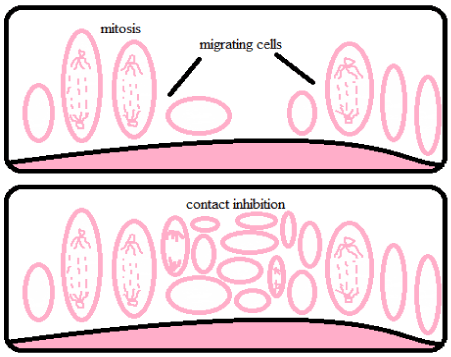 |
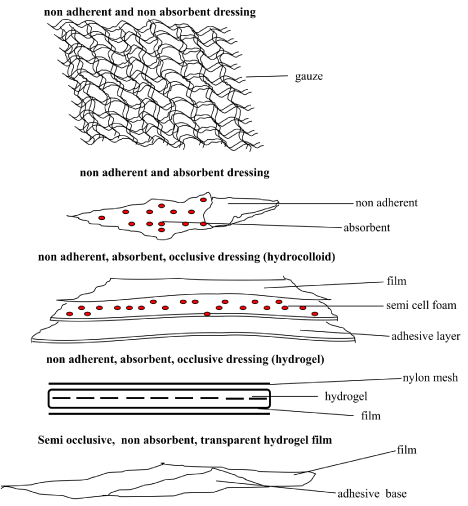 |
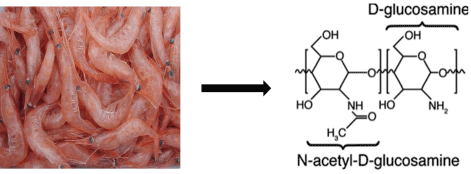 |
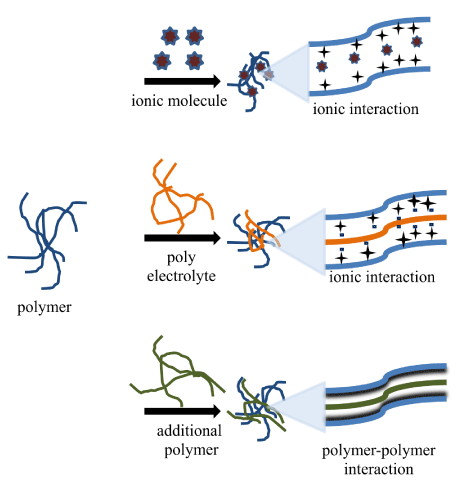 |
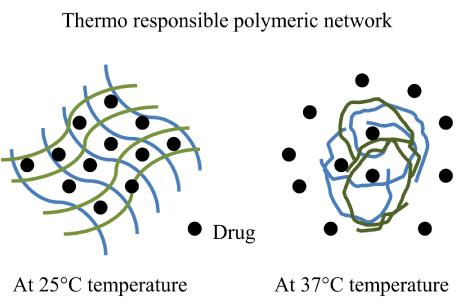 |
| Figure 1 | Figure 2 | Figure 3 | Figure 4 | Figure 5 |
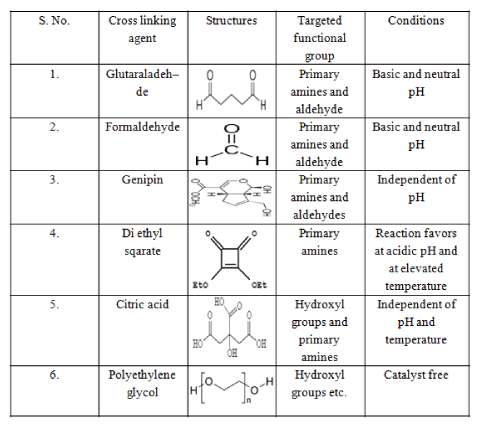 |
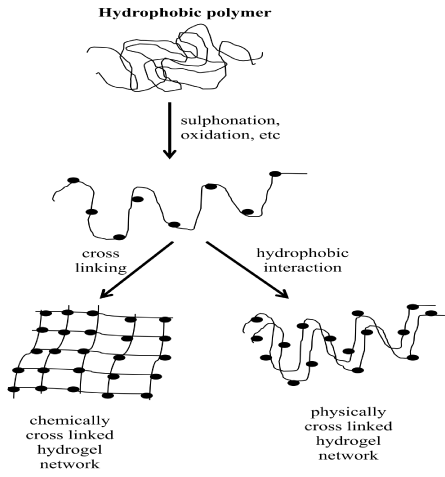 |
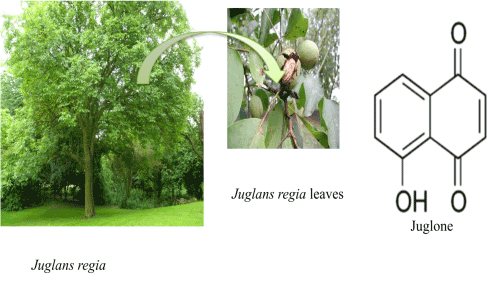 |
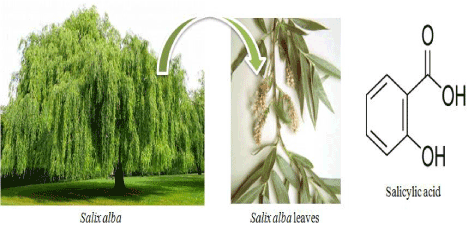 |
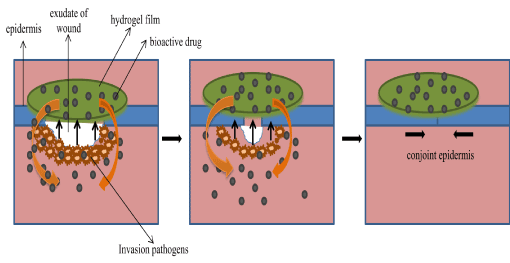 |
| Figure 6 | Figure 7 | Figure 8 | Figure 9 | Figure 10 |
Relevant Topics
- Analytical Biochemistry
- Applied Biochemistry
- Carbohydrate Biochemistry
- Cellular Biochemistry
- Clinical_Biochemistry
- Comparative Biochemistry
- Environmental Biochemistry
- Forensic Biochemistry
- Lipid Biochemistry
- Medical_Biochemistry
- Metabolomics
- Nutritional Biochemistry
- Pesticide Biochemistry
- Process Biochemistry
- Protein_Biochemistry
- Single-Cell Biochemistry
- Soil_Biochemistry
Recommended Journals
- Biosensor Journals
- Cellular Biology Journal
- Journal of Biochemistry and Microbial Toxicology
- Journal of Biochemistry and Cell Biology
- Journal of Biological and Medical Sciences
- Journal of Cell Biology & Immunology
- Journal of Cellular and Molecular Pharmacology
- Journal of Chemical Biology & Therapeutics
- Journal of Phytochemicistry And Biochemistry
Article Tools
Article Usage
- Total views: 19161
- [From(publication date):
September-2015 - Nov 23, 2024] - Breakdown by view type
- HTML page views : 14476
- PDF downloads : 4685
